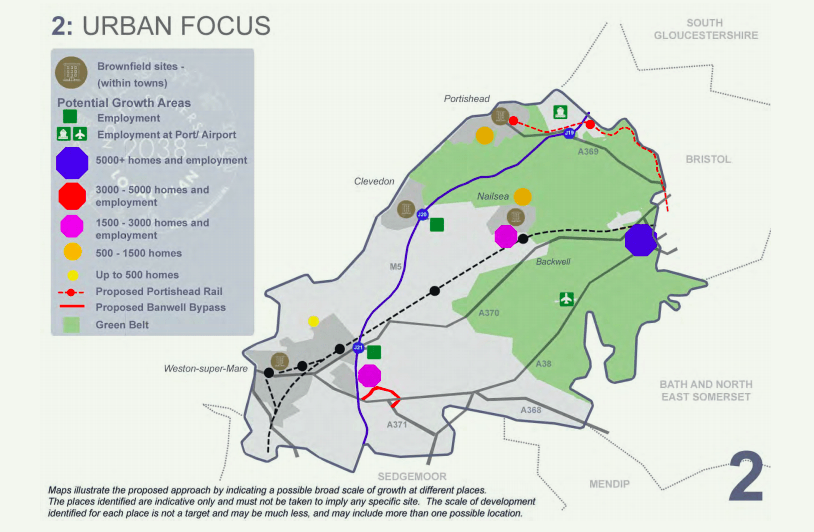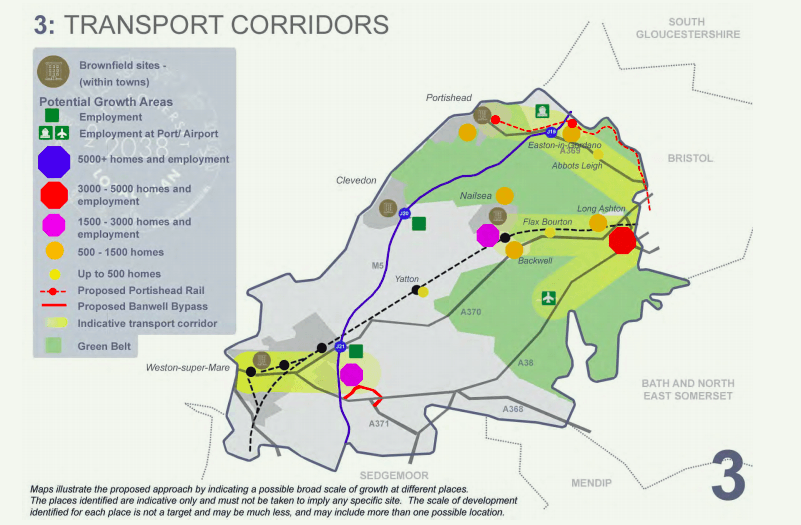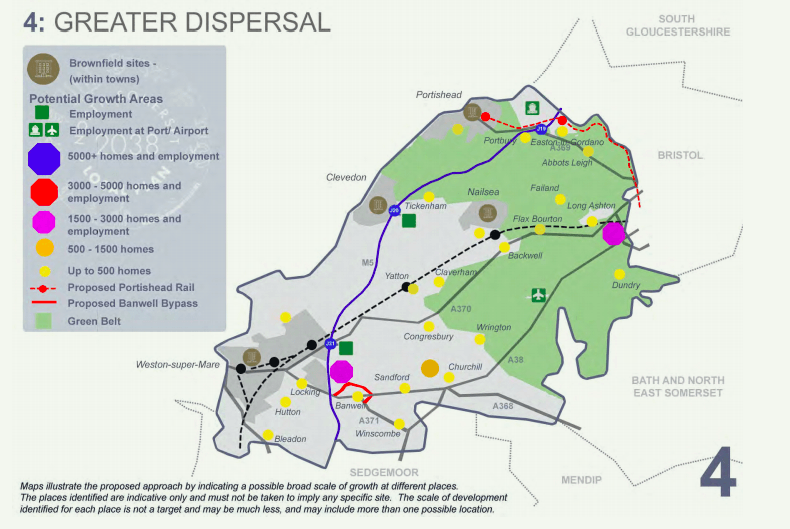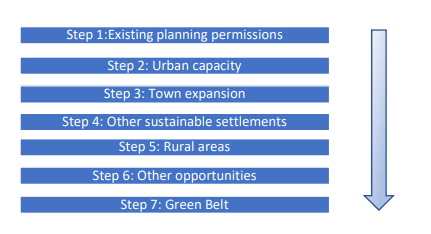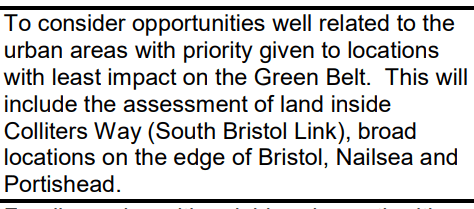6,000 homes on the green belt?
North Somerset Council announces that almost 6,000 homes may need to be built in the green belt to meet target imposed by Government
Those of you who have read my posts before will probably be aware of the problem North Somerset faces in accommodating the 20,000 new homes we are being told by central Government that we need to build over a 15 year period. We have just under 100,000 homes at the moment so 20,000 represents a huge increase. Finding somewhere for all these homes to go is particularly difficult in North Somerset as we have a lot of green belt, extensive areas subject to flooding, and an area of outstanding natural beauty. (If you want to read more click here for my dedicated webpage).
In responding to the target the Council is drawing up a Local Plan, this plan aims to ensure that development is planned and avoids speculative and ad-hoc development.
Up here in the northern part of North Somerset we are blessed with Green belt which for decades has prevented the sprawl of Bristol and preserved villages such as Long Ashton and Failand. This is now under threat.
Options: where could these houses be built?
Last year the Council consulted on a number of different approaches to accommodating these numbers. The four broad strategies were retain the green belt, urban focus, transport corridors, and greater dispersal. These approaches are illustrated by the maps below.
The outcome of this consultation was clear. Residents wanted development to be focused in and around urban areas but at the same time to avoid building on the green belt.
North Somerset Council draft Spatial Strategy
In a document published on its website at the end of April North Somerset (click here for full document) Council sets out its preferred spatial strategy for accommodating and allocating these new houses. It reads as follows;
'Priority will be given to locating new residential and mixed use development in or close to urban areas where there is an existing or proposed wide range of facilities, service and jobs, and there are opportunities to encourage active travel, particularly at locations which are currently, or have the potential to be, well served by public transport. Employment opportunities will be encouraged at accessible locations well-related to the urban areas and where sustainable transport opportunities can be maximised. Residential development in areas at risk of flooding will be minimised outside the towns. The amount of development at villages and in the countryside will relate to local community needs'
This can be very confusing! However, there are two important points to note.
1 - The Green Belt HAS to be the last option
The diagram opposite, taken from the North Somerset Council report, details the steps that have to be undertaken before the green belt is even considered for development.
As you can see there are many other options and, as stipulated by law, the Green Belt has to be the last area considered for development.
2 - It's so many houses there seems little choice but to consider development on North Somerset Green Belt
Following the process outlined in point 1, and adopting the preferred spatial strategy detailed above, the Council included an illustrative table in the report detailing where the houses could be built. This is illustrated below:
This details that the Council believes it can accommodate 14,225 houses outside of the greenbelt. The implication is clear, unless more land can be found the 'residual' 5,860 homes would need to be built in the green belt (unless neighbouring Local Authorities are able to take some of the allocation, though this is considered very unlikely).
With respect to the green belt the report notes the following:
What does this mean for Long Ashton, Failand, and Wraxall?
In short this means more uncertainty for those of us living in Failand, Long Ashton and Wraxall. It seems the council have completely ignored, either by choice or by having to following existing law, the wishes of residents across North Somerset to avoid development on the green belt.
Although the Council are keen to point out that the table above is 'illustrative and will be subject to further testing and assessment', the direction of travel is clear. The council will now spend some months considering specific sites and locations before publishing a draft Local Plan at the end of the year.
It seems our fight to stop greenbelt development is now more about limiting development and influencing site allocation rather than stopping it altogether.
Who you 'blame' for this up to you. However, I can't help think that that accommodating a 15% increase in housing outside the Green Belt is a significant achievement. In my mind if we have to build on the green belt the blame lies firmly with the Government. Without a ridiculous housing allocation, we would be in a very different position.
If you want to keep up to date on local issues in and around Long Ashton, Failand, Wraxall, and Leigh Woods then please sign up to my newsletter. If comes out (roughly) monthly and is a summary of all the articles I post on this website and social media.

